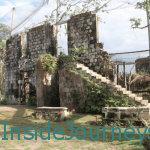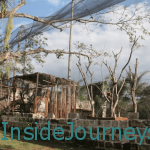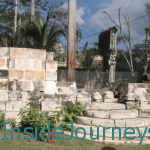When I heard there was a Slave Hospital at Good Hope Plantation in Trelawny, I was eager to see it. At that point, I didn’t know of another plantation that had its own hospital.
Now mostly in ruins, the remains of the 300-bed hospital, which was built around 1798, suggest a large building that was designed in almost the same Georgian style as the others at Good Hope.

Good Hope Great House & Plantation, one of Jamaica’s largest, was owned by John Tharp, whose holdings at the time of his death in 1804, were valued at approximately $4 million dollars, including 2,800 enslaved. Next to the hospital, Tharp also established a Free School for children who showed promise. A doctor also lived on the estate.
Tharp, who was born in Hanover, Jamaica, was 23 years old when he purchased Good Hope in 1767 from Thomas Williams. He treated his slaves well, making sure they were clothed, fed and housed.
My negroes have increased and are happy. They kill me with their constant visits and attentions. It gives pleasure, though I am fatigued to death before the day is half gone for I must talk and shake hands with every one of them.
That’s not to say that they were free. They were disposable property that were listed among his livestock with a value next to their names. But it’s his making available basic needs that earned their loyalty and explains why Good Hope remained untouched during revolts that destroyed other plantations. Good Hope continued to prosper even after the abolition of the trade in 1838. The sugar estate on the property remained in operation until 1902.
Only parts of the walls and steps of the Slave Hospital remain. The current owners is use it as an aviary.
Linking up this week with Travel Photo Thursday, which Nancie at Budget Travel Sandbox organizes. Be sure to head over and check out more photos from locations around the world.













